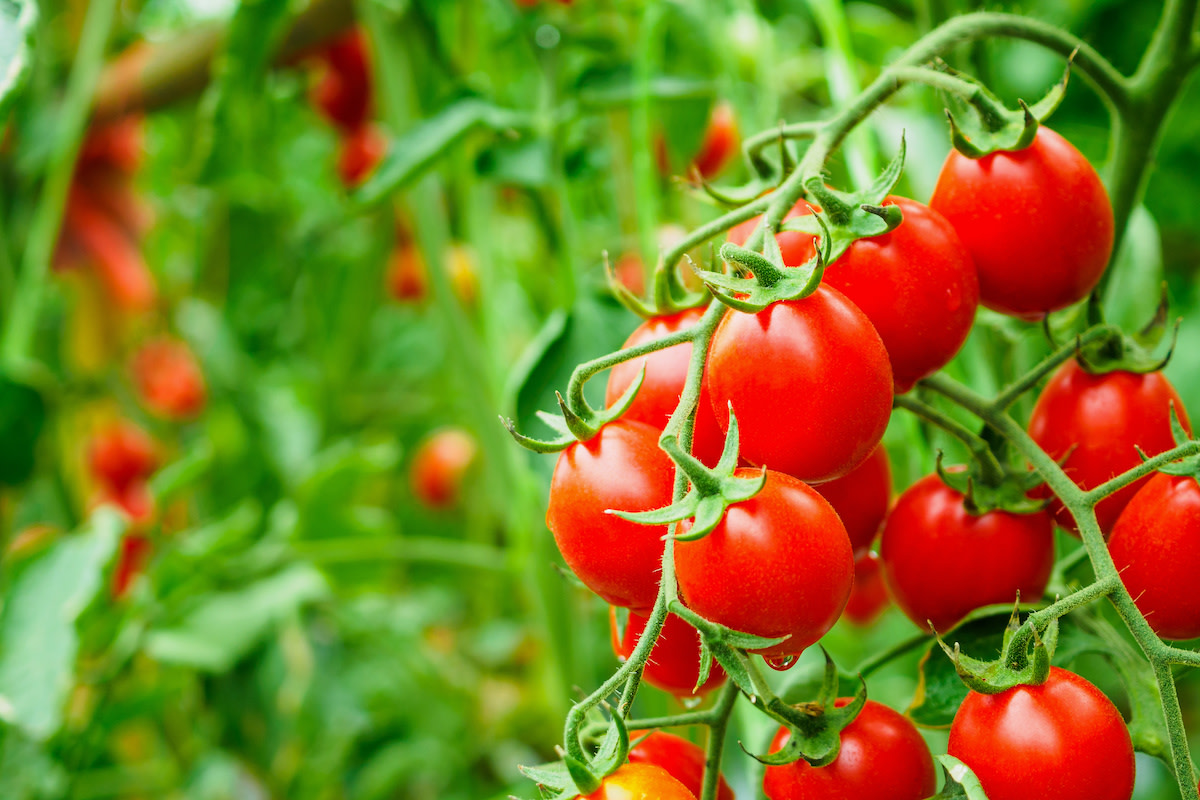13 Warm-Season Crops to Grow in Your Summer Garden
Written by MasterClass
Last updated: Mar 4, 2022 • 4 min read
If you’re looking to plant a summer garden, learn more about which veggies to plant in your vegetable garden for a bountiful summer harvest.
Learn From the Best
What Are Warm-Season Crops?
Warm-season crops are any fruit, vegetable, or herb that depends on warm weather to reach maturity. Warming air temperatures create warm soil that is suitable for growing warm-season vegetables. When daytime temperatures average between sixty-five and ninety-five degrees Fahrenheit, and ground temps are above fifty degrees Fahrenheit, it's safe to plant summer vegetables, fruits, and herbs. Depending on which USDA hardiness zone you live in, warm-season crops can be planted in early spring, late spring, or year-round. As a general rule, it's best to wait to plant warm-season crops until after the last frost has occurred. Check your local horticultural records for the average last frost date in your area.
Cool-Season vs. Warm-Season Crops: What’s the Difference?
In contrast to warm-season crops, cool-season crops are edible plants that can withstand cold temperatures and light frosts. Moreover, cool-season crops such as hardy vegetables need cold weather in order to germinate, grow, and mature. Cool-season crops should be planted in early spring as soon as the ground thaws. They need enough time to complete their growth cycle before hot weather stifles their growth. Some common cool-season crops include Brussels sprouts, collards, chives, cauliflower, Swiss chard, kale, kohlrabi, leeks, parsnips, peas, radishes, spinach, turnips, and winter squash.
13 Warm-Season Crops
Consider some of the most common warm-season crops for your garden.
- 1. Blueberries: Blueberries are popular perennial fruit plants with a long growing season. The antioxidant-rich fruit can grow in compact spaces and produce crops for up to 20 years.
- 2. Cantaloupe: Cantaloupes are a warm-weather crop with a long growing season, thriving best in southern or subtropical climates. Cantaloupes are a variety of muskmelon known for having a tan, netted outer skin and subtle flavor. Other similar melon varieties include the honeydew melon, the Persian melon, and the Armenian cucumber.
- 3. Eggplant: With its deep-purple hue, the venerable eggplant is a great plant to grow in your home garden. While the warm-weather vegetable has a long growing season, it’ll be worth the wait once you make a perfect eggplant parmesan with the fruits of your labor.
- 4. Green beans: Green beans are a tender, annual vegetable also known as string beans or snap beans. Green bean plants can grow easily in your vegetable garden, often producing large quantities, which are easy to care for and harvest.
- 5. Okra: Okra is a plant known for its long, fuzz-covered pods and fibrous and tender leaves. Sometimes referred to as ladies’ fingers or gumbo, this plant is a member of the hibiscus family. While you might confuse it for a veggie, okra is a fruit. Many people harvest okra to use it in soups, stews, and other recipes.
- 6. Bell peppers: Bell peppers are a warm-weather crop and a popular nightshade vegetable good for both eating raw and cooking. Crunchy, sweet bell pepper plants lack capsaicin, the active component in hot peppers that gives them their heat.
- 7. Lima beans: Lima beans, named after the capital city of their origin country Peru, are nutritious, warm-season legumes full of protein and iron. Lima beans are easy to grow and harvest and make delicious additions to meals and snacks. If you live in a climate with higher soil temperatures, you may be able to produce your own bountiful lima bean harvest.
- 8. Lingonberries: Lingonberries are known by many names—mountain cranberry, foxberry, and cowberry—but no matter what you call them, the striking sour-sweet flavor of these scarlet red berries are a highlight of midsummer and early fall for colder regions.
- 9. Sweet corn: From corn on the cob to creamed kernels, corn is a staple of American cuisine and an excellent choice for a home gardener looking to add some height to their vegetable garden. Corn is a beautiful and fun summer crop that will grow without too much fuss.
- 10. Sweet potatoes: From Thanksgiving casseroles to roasted side dishes, sweet potatoes are a staple of American cuisine. With their bright orange flesh and sweet, earthy flavor, a sizable sweet potato crop can be a great addition to your vegetable garden—and these starchy root vegetables can last for up to six months in the pantry.
- 11. Tomatoes: Beefsteaks, cherry tomatoes, full-to-bursting heirlooms in tie-dye hues—the endless array of tomato varieties are a centerpiece of any summer vegetable garden.
- 12. Watermelon: Watermelon is a vibrant, refreshing summer staple that comes in seeded and seedless varieties. Growing watermelon in your home garden requires patience, sunshine, and routine maintenance.
- 13. Zucchini: Zucchini is a summer squash that is popular for home gardens since it grows easily and produces an abundant crop.
Learn More
Grow your own garden with Ron Finley, the self-described "Gangster Gardener." Get the MasterClass Annual Membership and learn how to cultivate fresh herbs and vegetables, keep your house plants alive, and use compost to make your community—and the world—a better place.
